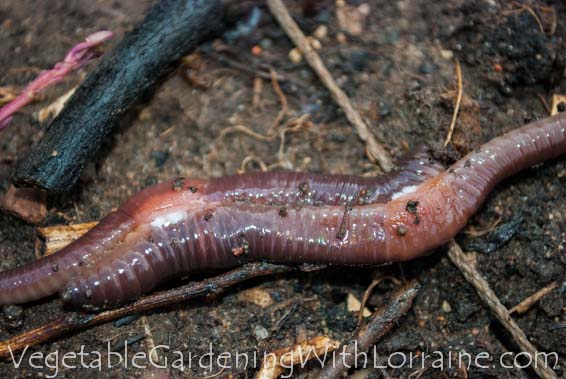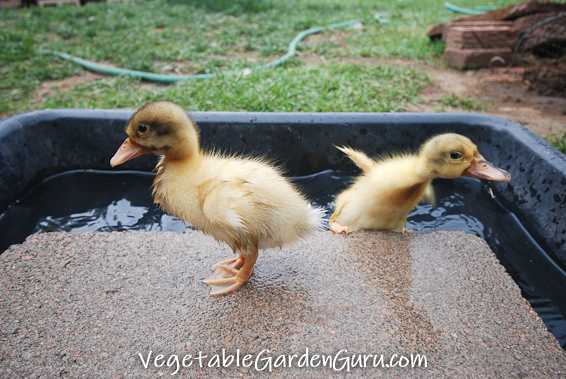| Back to Back Issues Page |
 |
|
Under the Arbor: July 2021 July 21, 2021 |
July 2021
In this Issue:
For the Love of EarthwormsLike Charles Darwin, who spent 40 years observing them, I love earthworms. If you want healthy soil that packs nutrition into plants, you must nurture your native earthworm population.Do this by providing leaf, straw or weed mulch, a little application of compost in the spring, and also do your best to leave crop root systems intact when you harvest crops in the fall. Night crawlers are deep-earth worms, and are awesome vegetable garden helpers because they create very deep channels that provide excellent water and air penetration and help break up hardpans caused by prior tilling. And of course, like all earthworms, they are primary decomposers of plant waste, giving the microbes and fungi more surface area to work on. Here's a photo from the party they had on the surface on June 27:

For more info on the fascinating life cycle and habits of our wormy friends, you can visit the Earthworm Life Cycle page. Worm Bins A worm bin is a great way to transform your kitchen scraps into concentrated, microbe-rich worm castings. But worm bins generally won't work for native earthworms, because most wild worms need to go deep. You can drill a bunch of holes in the sides and bottom of a 5-gallon bucket, and bury it to a couple of inches from the brim, and it will attract your own native worms to feed on the kitchen scraps you put in the bucket. This works, but if you have squirrels or rats in your area it may also attract them. They can chew right through the plastic lid to get at apples or other nummies in the bucket. Red wigglers are the preferred worm for worm bins. Just be aware of one BIG no-no for worm bins: don't use Asian "jumping worms". They are such invasive and aggressive surface feeders that they are taking over and destroying many native forests! Make sure if you buy worms for a worm bin that you are not getting jumping worms, that wiggle like crazy and have a lighter-colored "clitellum" band near the end than do red wigglers. If you buy from Uncle Jim's Worm Farm you will be in good hands. After having used stacked Rubbermaid tubs with holes in the bottom as worm bins for years, I finally bought myself a Hungry Bin in 2017. It was an investment, but I LOVE the brilliance of its flow-through design and the ease of use and harvesting. It's big enough to handle all our scraps and churns out enough castings to feed our whole garden prodigiously.
Aphids… finally a practical solution.I've had it with aphids.I have great nutrient levels, good microbiology in the soil, have lots of habitat and food for beneficial insects (including ladybugs and parasitic wasps), and yet every year I get aphids on (and in) my Brussels sprouts. Why, oh why? Aphids reproduce incredibly fast in the summer because they do what's known as "parthenogenesis", which means they give birth to live young. One female can churn out 100 babies a day, and within a week each of those babies will be doing the same thing. So a single aphid mama can end up with - literally - a million descendants by the end of the season. I started wondering, "How do they go through the winter? They should freeze and burst!". (I wish…). Turns out, they also lay eggs that survive the winter, usually laid on perennial plants near the end of the season or when their population density is getting super-high. But the life cycle gets complicated fast, and it's different for different species. What we want to know is how do we control them? I know, dish soap spray works to kill them, but unless rinsed off after a bit, can burn the plants themselves, and I worry that it will also harm the soil ecosystem. Hitting them with a strong hose spray works pretty well too, but you have to keep after it, pretty much every day, and it's hard to reach all the undersides. I try to make it part of my daily routine, but if I blink there's a billion more. I've just recently discovered the "Bug Blaster". It's a wand nozzle that puts out an incredibly high-pressure, fine, 360-degree spray that blasts bugs right off of plants. It doesn't seem to be available on Amazon anymore, but you can buy direct from the source at: odonell-innovations.com. (FYI: I don't get a commission). Until your Bug Blaster arrives in the mail, do your best with daily hosedowns, because any interruption in the aphids' life cycle cuts them off
at the knees. (Wait... do aphids have knees?)
I'll leave you with a little advice for staying cool:
|
| Back to Back Issues Page |